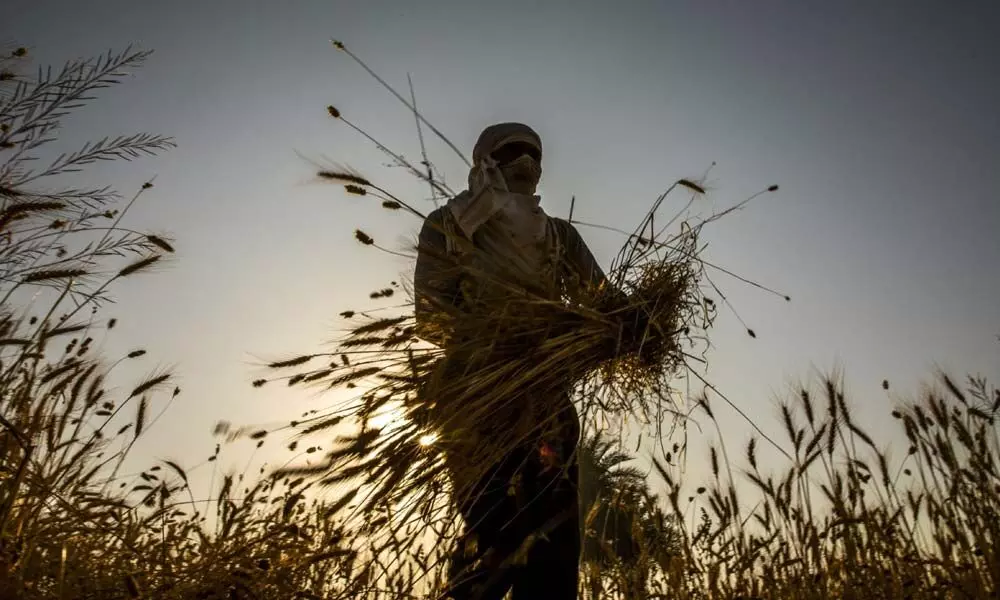India spending on growth later leaves little for vulnerable now
While Modi’s popularity has endured throughout the pandemic, lower spending on social programmes risks undermining his support as farmer protests gain international support
image for illustrative purpose

India has vowed to spend almost half-a-trillion dollars to bring the pandemic-ravaged economy back onto a growth path, but that risks leaving vulnerable sections that still need support without immediate help.
While Prime Minister Narendra Modi's administration sees a 26 per cent jump in capital expenditure - money for creating or maintaining assets, including infrastructure - for the year starting April 1, the increase in total spending is less than 1 percentage point. That's partly due to cuts or slim increases for some social sector programmes, even after the government has spent a record this fiscal year on rural jobs and food programmes.
$500 billion India Budget for growth leaves little for poor
The South Asian economy's recovery from an unprecedented recession is widened the gap between its haves and have-nots, raising expectations the Budget would help bridge the divide by giving income support to the poor or raising taxes for the rich. Finance Minister Nirmala Sitharaman instead pledged higher capital spending in pursuit of a multiplier effect.
"Government has consciously taken a decision to be expansionary, and expansionary without limit. But when it comes to the vulnerable sections, the spending is not adequate," said Narendra Jadhav, an economist and lawmaker, who advises the federal government and headed a committee in 2011 on budget allocations for the most vulnerable.
'Lifts all boats'
While Modi's popularity has endured throughout the pandemic, lower spending on social programmes risks undermining his support as farmer protests gain international support. He faces two State elections this year that could impact his ability to push legislation through parliament.
The finance minister's chief economic adviser, Krishnamurthy Subramanian, said in an interview that higher capital spending will create jobs - "the best way to equip a person" - and that an investment of one rupee in infrastructure adds 2.5 rupees to the economy, compared with a slight loss from expenditures like direct cash payments. "Growth lifts all boats. Income transfers do only so much," he said.
Here's a look at the programmes that are missing out:
Farm sector
While agriculture is the primary source of livelihood for about 58 per cent of India's 1.3 billion people, and the sector showed resilience when manufacturing and services slumped, the Budget barely budged for the coming year. Expenditure Secretary T V Somanathan explained that part of the reason is one of the large States - West Bengal - isn't participating in an income support programme for farmers.
Health Budget
When Sitharaman flagged a 137 per cent increase in health spending in her Budget speech, she was including money for programmes such as clean water and sanitation, as well as vaccines that are embedded in other parts of the Budget. That obscured details that the health ministry's Budget is being slimmed, which is seen as insufficient for India's vulnerable. "We need much more help with diagnostics, free medicines, more doctors and nurses being available for poor people," said Reetika Khera, economics professor at the Indian Institute of Technology in New Delhi.
Pension payments
The government also reduced its Budget for pensions, which go to about 58 million beneficiaries. Somanathan, the expenditure secretary, explained that the decline is due the government clearing its past arrears, without providing detailed figures.
Education funds
As the pandemic close most schools and widened the gap in education access, the government wasn't able to spend allocated resources this year and planned lower spending for the coming year. That's largely due to services remaining shut for much of the year and unspent money in many States, Somanathan said.
Social welfare
Expenditures on social welfare, which include support for senior citizens, the destitute and widows, have also suffered. That comes as a higher proportion of women than men saw job losses or salary cuts, and carried the burden of unpaid care work at home. Meanwhile, lower castes suffered the largest relative fall in employment and faced discrimination when they returned to villages after losing jobs in cities. "One way to look at it is that the worst is behind us," said Sunil Sinha, an economist at New Delhi-based India Ratings & Research. "But these are unprecedented times, and given the battering the most vulnerable sections of society have taken they need more hand-holding and help. It is a worry that the government seems to have withdrawn its helping hand a bit early." (Bloomberg)
Vrishti Beniwal & Archana Chaudhary

